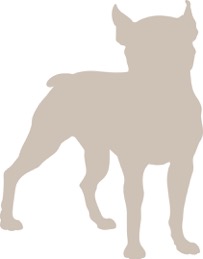Trending
DOCK (v.): The controversial practice of removing an animal’s tail
January, 2016

People are divided about tail docking. The practice began for the purpose of preventing farm animals such as horses, sheep or pigs from getting their tails caught in equipment or from having them bitten off by other animals. Docking the tails of particular breeds of domestic dogs is also a common practice and a controversial one. Many people believe that tail docking is a form of animal cruelty and, as such, the practice has been completely outlawed in many countries or only allowed in cases related to working dogs or kennel clubs (organizations where dogs are bred, shown and promoted).
Licenced Veterinarians
In countries such as Norway, Australia and the United Kingdom, the practice of tail docking has been completely banned, even in the case of working dogs or kennel club dogs. In fact, in the United Kingdom, the Veterinary Surgeons Act ensures that veterinarians who perform the procedure could have their names removed from the professional register. In Canada, however, tail and ear docking are still permitted for working dogs and dogs in the Canadian Kennel Club. Those procedures, however, can and must only be performed by a trained and licenced veterinarian, as it results in safer practices, such as approved surgical standards and tools, anaesthesia and better long-term recovery.
Kennel Clubs
Kennel clubs specialize in working dogs or show dogs. They popularized showing certain purebreds and encourage practices such as tail and ear docking to match the consistent look that the club is familiar with. For decades, it has been the norm in the Canadian Kennel Club to practice tail docking on dog breeds such as Boston Terriers, Bouviers, Boxers, Doberman Pinschers, Great Danes and Schnauzers because it is recognized as traditional within kennel clubs around the world.
Tail Wagging
Part of the controversy surrounding tail docking is that it can cause pain and infection—but there are less obvious reasons to consider outlawing the practice. Because dogs use their tails to communicate with other dogs and with people, a dog without a tail might not be able to show emotions such as fear, aggression or playfulness as clearly as dogs with tails. This uncertainty can increase the worries of those who are unsure if a dog is barking because it is playing or because it is going to attack.
Social Cues
Dogs that previously used their tails for activities such as swimming and running will be at a disadvantage if their abilities are cut short. Tailless dogs would find themselves with poor balance and less social cues compared to other dogs. Tom Reimchen, a University of Victoria biologist, supervised a study that suggested that dogs with docked tails would grow up to be anti-social because they’re not able to properly communicate with other dogs or with people and are, therefore, limited in their abilities.
Protesting Docking
Although tail docking is banned in 41 countries, Canada still allows veterinarians to dock the tails of working dogs and those in kennel clubs. There is also a loophole in Nova Scotia where it is not provincial law to follow these measures. There have been petitions on Change.org to ban tail docking completely in Canada; however, the initiative is yet to be successful. Other activist groups such as PETA (People for the Ethical Treatment of Animals) are memorable for regularly protesting issues such as tail and ear docking. t8n
New to the Kennel Club
Recently two new breeds were added to the American Kennel Club:
The American Hairless Terrier and the Sloughi. Starting this year the two breeds will be able to compete is most shows. This completes the count of 189 dog breeds as part of the club.













